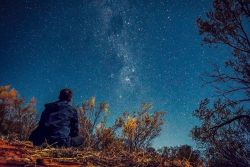Thermal wonderland
Rotorua is a city south to the Lake Rotorua from which the city takes its name and is located centrally in New Zealand's North Island. The "thermal wonderland of New Zealand" attracts tourists for its hot springs and geysers.
Hot springs and geysers INSIDE the city
From Taupo I drove to Rotorua with anothre German woman I had met there in my hostel. When we arrived in the city, we immediately sensed the eggy smell of sulphur that was everywhere in the air here. How can the nearly 55 inhabitants stand that odour? In many places in the city, hot steam emerges from pools and crevices in the earth, which is an indication that the city was built on a volcano. Many of its thermal springs are used for baths and health resorts or for heating in the cooler seasons. I made a little walk along the white Rotorua lake and entered a park in the city center, the Kuriau Park which features hot springs and mud pools.
The city is full of little lake flies, even in my hostel where was no escape from them. Fortunately they are harmless and don't bite like the sand flies do. In my hostel I also met the 3 English mates again, with whom I skydived in Taupo. In the evening I visited a small food market with them, which took place in the center of the town. We concluded the evening in the hostel's own warm whirlpool and drank a bottle of New Zealand wine.
Mountainbiking in the Redwoods Forest
The next day I rented a mountain bike for about 40 $. I was able to explore the Redwoods Forest in Whakarewarewa for a total of 4 hours, which is popular with mountain bikers all over the world. While I was there, a Crankworx event was taking place, which gathered some of the world's best mountain bikers. It took me a little bit of time to get back into the mountain bike rhythm, because I hadn't ridden such a vehicle for a long time. But it was a lot of fun to speed down some nice trails that were scattered all over the forest. I made a short stop at a beautiful green and blue lake.
The Maori village Whakarewarewa
The next day I met up with the German woman with whom I had arrived in town and we went on a tour through the Maori village Whakarewarewa, which we had booked in advance on the internet. Most of the Maori, the indigenous people of the country, live in this area. Often they have a wide back and broad face, just like their Polynesian ancestors. The tour was very interesting. First of all she showed us how to pronounce the name of the place. Maori words sometimes reach a considerable length. The longest place name in the world also has its origin in the Maori language. It is Taumatawhakatangihangakoauauotamateapokaiwhenuakitanatahu, a tiny hill with 85 letters in its name!
Using geothermal energy for cooking and keeping warm
Even today several hundred people live in this village and try to keep the traditions alive. We learned how the Maori use the geothermal energy there in the village. So they don't need a stove or anything like that, because they steam-cook food using heated rocks buried in a pit oven (called umu) and then put the lid on it. They then wait a few hours and have a fully finished dish. This method is called Hāngi.
They also do not need heaters. When they freeze in winter, they just sit down in the super hot springs and warm themselves up for a few minutes.
At the end the guide showed us one of the typical Maori meeting houses, with chic decorations on the roof edges.
A Maori dance
The tour ended with a passionate dance performance of the Maori. Of course they also demonstrated the famous war dance, the Haka, which has even been adapted by the New Zealand national team.
Wai-o-Tapu - a vast geothermal area
Afterwards we drove to the volcanic area, Wai-o-Tapu, which cannot be reached from Rotorua without a car. Since the tour was too expensive for both of us, we tried to hitchhike. I have never had any luck with hitchhikers. At first we only held out our arms and nobody stopped for us. When we made a sign and wrote our destination on it, an older Australian couple stopped immediately and took us with them.
The Wai-O-Tapu Thermal Wonderland is a 40-hectare area, the most active area of the Wai-O-Tapu Geothermal Field, one of the largest in New Zealand. You need to pay 25 NZ$ to visit the 25 geothermal sites. It contains collapsed craters, fumaroles, hot springs, hot and cold ponds and pools coloured by minerals, and mud ponds from which gases of volcanic origin rise and burst on the surface as mud bubbles. The biggest attraction is the Champagne Pool. The name is derived from the continuous stream of gas bubbles that rise to the surface of the water, comparable to gas bubbles in a bottle of champagne. Metalloids give the hot pool an orange colour.
Another attraction is the Lady Knox Geyser, a geyser artificially created from a hot spring. Every day at 10:15 am the geyser is activated by adding soap. A Bavarian woman we met there drove us later to an eroded mud volcano, which today only consists of a mud crater, from which small and larger gas bubbles constantly escape and burst on the mud surface with a distinct sound.

